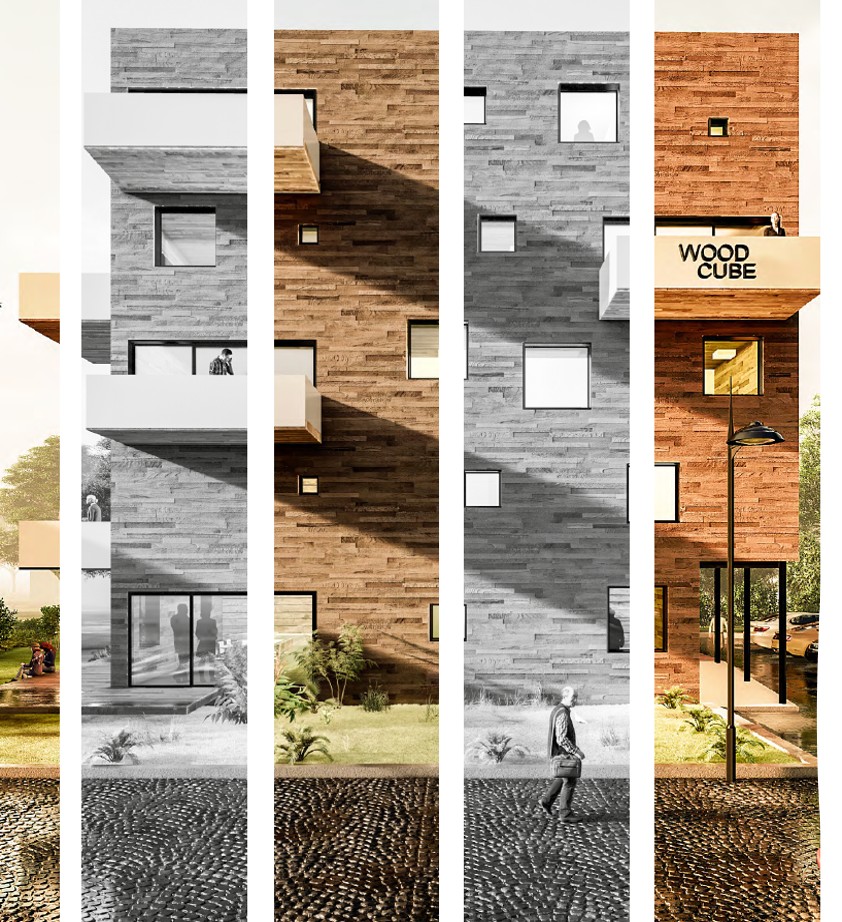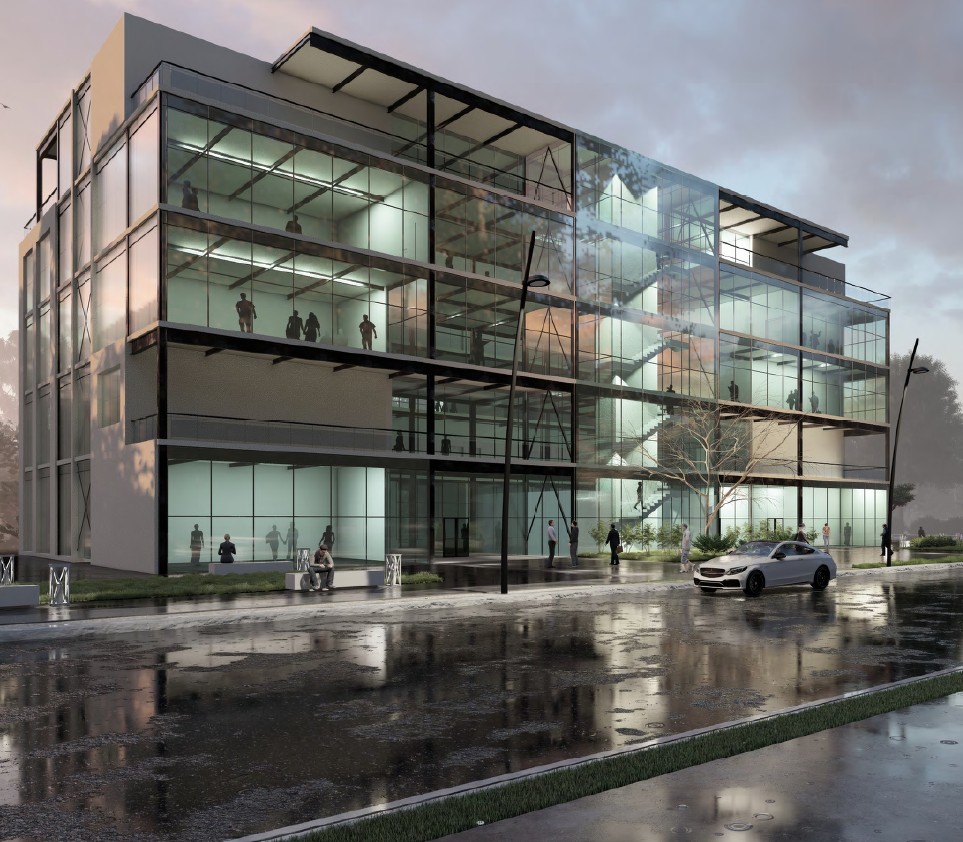STUDIO AVANTI
We are redefining the structures of the future
With its interdisciplinary approach, STUDIO AVANTI brings together architecture, engineering and technology to design structures that adapt to today's and future lifestyles.
Who Are We?
STUDIO AVANTI is a project and consultancy firm whose foundations were laid in 2019 and which started to operate independently in Italy in 2022, thanks to its multidisciplinary working environment and strong team spirit created by a talented and dynamic technical staff.
As of 2025, it continues to develop its activities in the fields of integrated building design, façade and structural engineering with the aim of redefining the buildings of the future.
Today, STUDIO AVANTI strives to create structures that adapt to lifestyles not only today but also the future. Our interdisciplinary approach combines architecture, engineering, and technology under one roof, offering innovative designs that meet national and international standards. By prioritizing quality, reliability, and sustainability in every project, we aim to add long-term value to our business partners.
Integrated Building Design
In modern architectural and engineering processes, the early integration of all building disciplines is critical for both design and performance. Integrated building design is an approach that integrates architecture, structural engineering, mechanical and electrical systems, and sustainability criteria into a holistic approach.
Thanks to this approach:
- Structural systems and mechanical-electrical installations support each other, minimizing conflicts.
- Energy efficiency, material usage and cost optimization are achieved.
- During the design process, decisions are considered in line with performance and aesthetic goals.
- Sustainability and comfort criteria are prioritized throughout the building life cycle.
Integrated building design brings together all building systems without being limited to a single discipline, creating more efficient, flexible and high-performance buildings.
Computational Design & Parametric Architecture
Architecture today is not just about aesthetics and functionality; it's also a process driven by data, algorithms, and performance. We combine computational design and parametric architecture approaches in our projects.
This approach allows us to reimagine the design's form, function, and performance by defining specific parameters for each project. Variables such as light, wind, acoustics, energy efficiency, and occupant density become active design inputs that shape the project's character.
Parametric architecture not only produces visually innovative forms, but also creates value in terms of environmental sustainability, material optimization, and user experience. Computational design, with algorithmic methods and digital fabrication technologies supporting this process, is integrated throughout the design process, from conception to production.
Passive House Design
The architecture of the future is built on energy efficiency and sustainability. Passive house design is one of the most advanced examples of this approach. Its goal is to provide maximum comfort with minimum energy consumption.
Passive house design is based on thermal insulation, air tightness, proper orientation, high-performance windows, and controlled ventilation systems. Solar energy is utilized most efficiently while heat loss is minimized. This results in both low heating requirements in winter and low cooling requirements in summer.
In our approach, passive houses are not only energy-efficient structures but also healthy, comfortable, and environmentally friendly living spaces. Through the use of natural light, clean air, and smart materials, we enhance quality of life while reducing our carbon footprint.
Low Energy Building Design
One of the most important goals in building design today is to reduce energy consumption, both to reduce environmental impact and to provide economic benefits to the user. Low-energy buildings are structures with increased efficiency that consume significantly less energy than standard structures.
In these buildings, heating, cooling, and lighting needs are minimized thanks to thermal insulation, air tightness, high-performance windows, and energy-efficient mechanical systems. This reduces energy consumption and ensures high comfort in living spaces.
The low-energy building approach not only means saving energy, but also using environmentally friendly materials, healthy indoor environments, and sustainable living standards. Going forward, these buildings represent an important transition to nZEB (nearly zero-energy buildings) and passive houses.
Building Envelope and Facade Engineering
A building's performance, comfort, and sustainability depend largely on its envelope design. Building envelope component engineering encompasses the engineering and design processes of the entire building envelope, from roof to façade, windows to doors.
This discipline aims to optimize the thermal, water, air, and sound insulation performance of all elements separating the building's interior and exterior environments. Proper material selection and integration improves energy efficiency and creates comfortable and healthy interior spaces.
Building envelope engineering also balances the building's durability, wind and earthquake resistance, and aesthetic design. Modern design approaches and digital modeling techniques enable us to develop solutions that meet both functional and visual standards.
Seismic Design
Seismic design is an engineering approach designed to ensure that structures are safe, durable, and resilient against earthquakes. This design method aims to ensure that buildings and infrastructure can withstand the forces that may occur during an earthquake and minimize damage.
During the seismic design process:
The structural system of the building is planned to absorb and distribute earthquake loads.
Material selection and structural details are determined to increase safety and optimize deformation capacity.
Risks are reduced by taking into account soil and foundation interactions.
The geometry and layout of the structure are designed to improve seismic performance.
Different earthquake scenarios are tested using modern simulation and analysis methods.
Seismic design not only ensures building safety, but also offers significant advantages in terms of quality of life, economic efficiency and sustainability.
Our projects
Woodcube (Hamburg)
Integrated Building Design
STUDIO AVANTI aimed to transform the Woodcube building in Hamburg into a more sustainable and self-sufficient structure through a "re-engineering" approach. Our goal was to achieve passive-house thermal goals, generate renewable electricity on-site, transform unused roofs and balconies into habitable energy-food-producing spaces, and meet the requirements of the Living Building Challenge, particularly the "Place" and "Energy" petals. The entire solution was designed around additions to the existing structure that were as "non-invasive" as possible.
LA CULTURA È DENTRO (MILANO)
Architectural Design and Structural Engineering
La Cultura È Dentro, a multifunctional cultural center that we designed to integrate into the cultural fabric of Milan, is a building where architectural design and structural engineering disciplines are brought together with a holistic approach.
Within the scope of the project, the design, developed in line with the principles of mass composition, spatial organization and structural system optimization, has a flexible plan structure that can host cultural events at different scales.
TADDEO PLAZA (NAPLES)
Modern Office and Mixed-Use Building
STUDIO AVANTI has completed the design of a five-story modern office building located in the heart of Naples. The project was developed in accordance with the latest Eurocode and NTC2018 standards, integrating engineering and architectural solutions.
GIUSTI PRIMARY SCHOOL ENERGY EFFICIENCY PROJECT (Milan)
Building Energy Modeling and Analysis
STUDIO AVANTI conducted a comprehensive analysis to improve the energy performance of a historic school building in Milan. Built in 1959, this educational complex, with classrooms, a dining hall, gyms, a library, and multipurpose halls, is a key educational hub for the region.

Company Policy
Quality Management
We are committed to providing technically reliable and innovative solutions that comply with national and international standards. By meticulously implementing quality control mechanisms at every stage of the project process, we ensure customer satisfaction and lasting success.
Customer Focus
By accurately analyzing our business partners' needs, we develop projects that meet their expectations and add value. We foster long-term partnerships by upholding the principles of transparency, continuity, and trust in all our business relationships.
Sustainability
We design buildings that are highly energy efficient, minimize environmental impact, and have long lifespans. We aim to add value to the future by encouraging the use of sustainable materials and technologies.
Ethics and Responsibility
We adhere to honesty, impartiality, and professional ethics in all our business processes. We maintain our credibility at every step by acting responsibly toward our employees, business partners, and society.
Innovation and Technology Use
We integrate the latest engineering methods and digital technologies into our projects. By supporting research and development, we foster continuous progress and deliver the most innovative solutions to our customers.
Human Resources
We support the development of our employees and rigorously implement occupational health and safety standards. We strengthen interdisciplinary collaboration and foster a professional work culture.
Our Basic Approach
Our corporate structure is strengthened not only by technical expertise but also by principles rooted in ethics, sustainability, and innovation. Our interdisciplinary approach prioritizes quality, reliability, and environmental awareness in every project, enabling us to create solutions that create value on both a national and international scale.
As STUDIO AVANTI:
- We place quality at the center of all our processes; we implement rigorous quality control mechanisms at every stage.
- We develop contemporary solutions by using technology effectively and support continuous progress through research and development.
- With a sustainability approach, we produce environmentally friendly, energy efficient and long-lasting designs.
- We consider customer satisfaction our top priority and establish transparent and trust-based collaborations.
- With our creative vision and engineering discipline, we design structures that meet not only today's needs but also the needs of the future.




